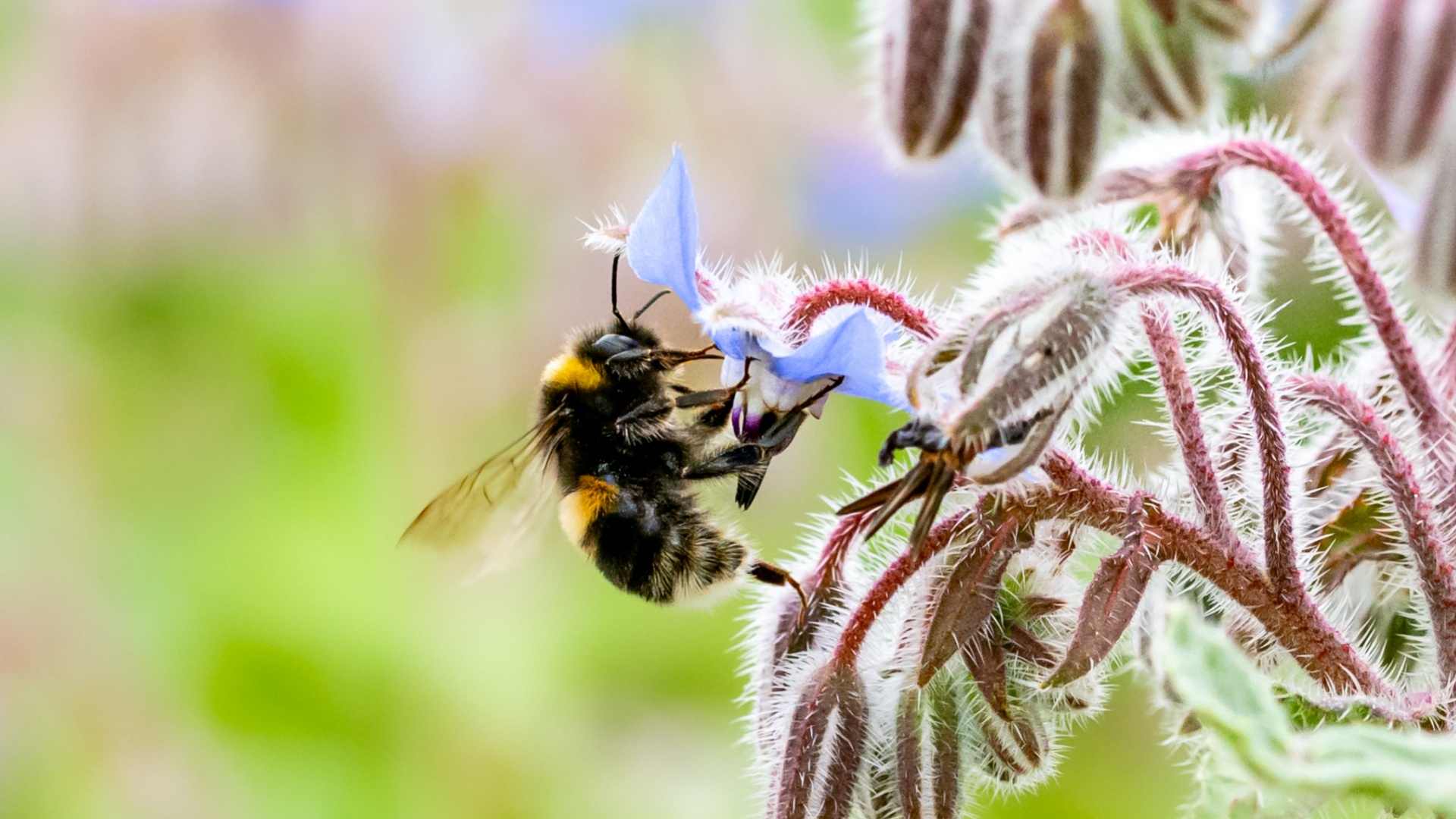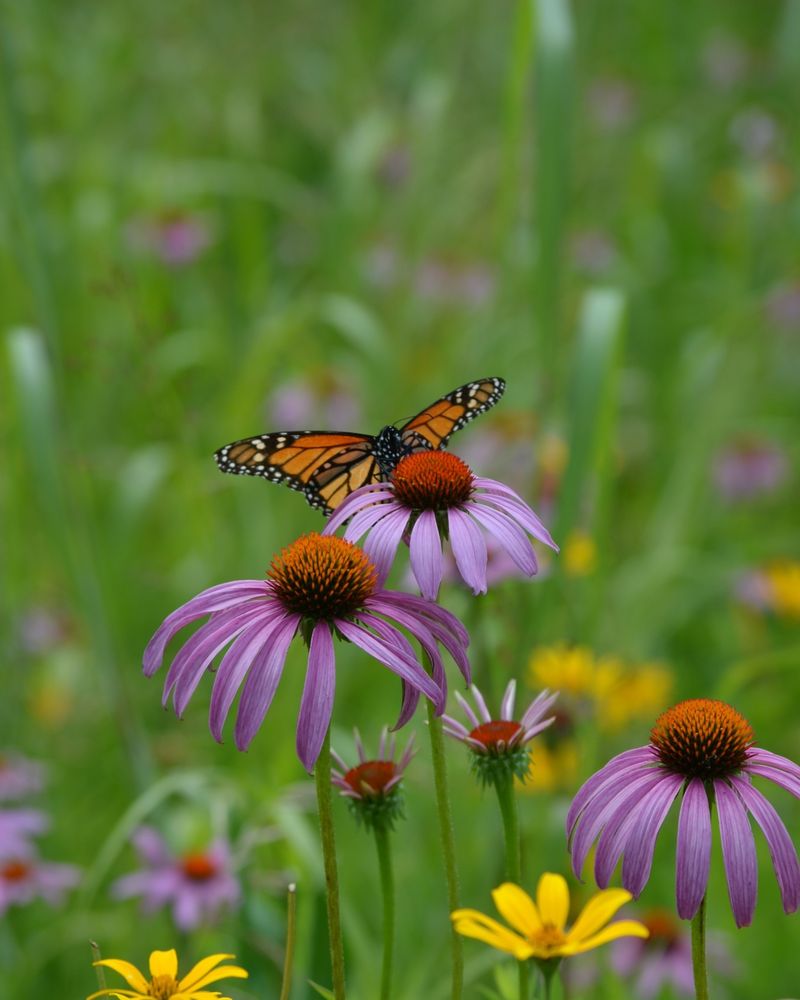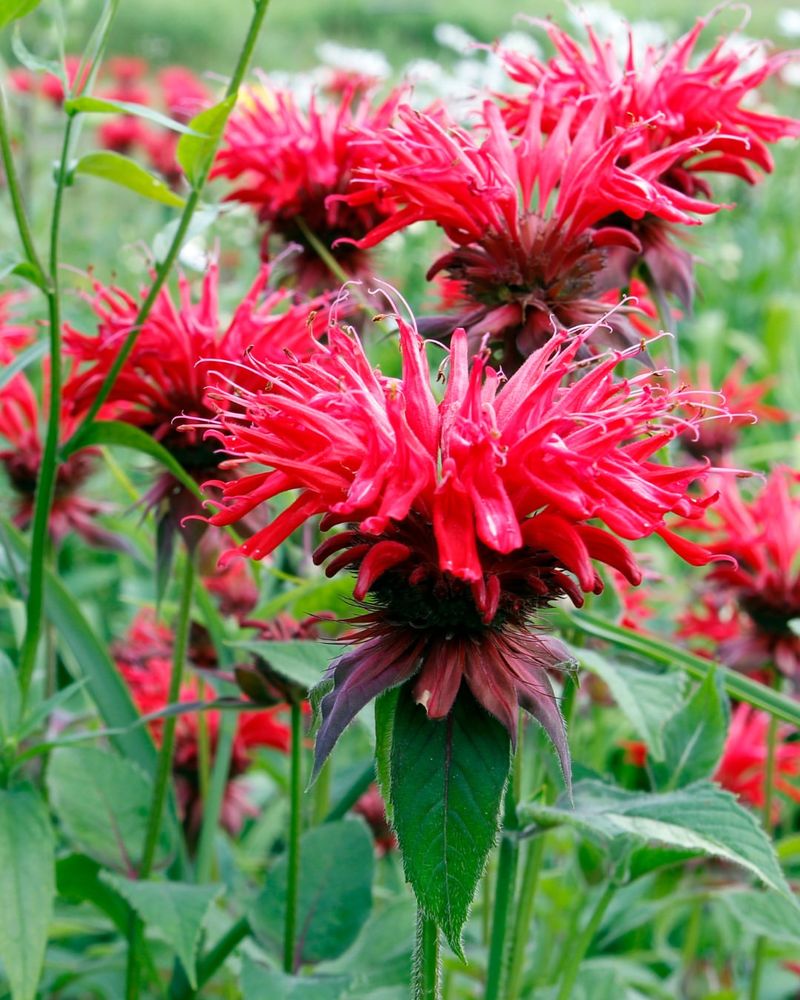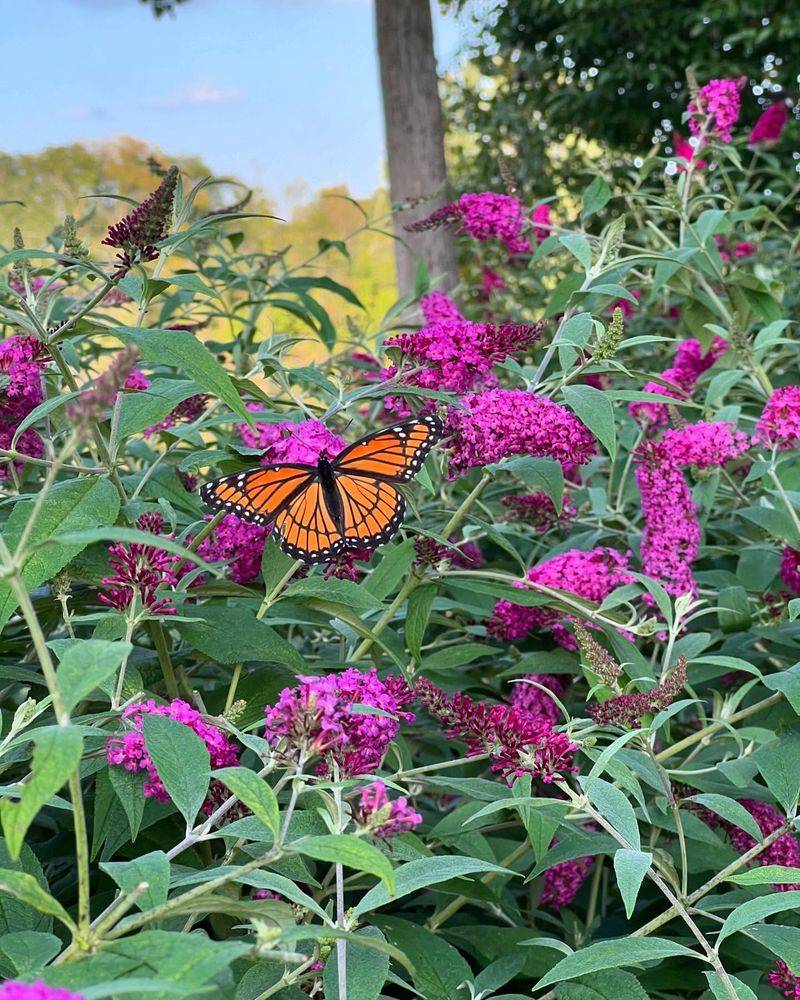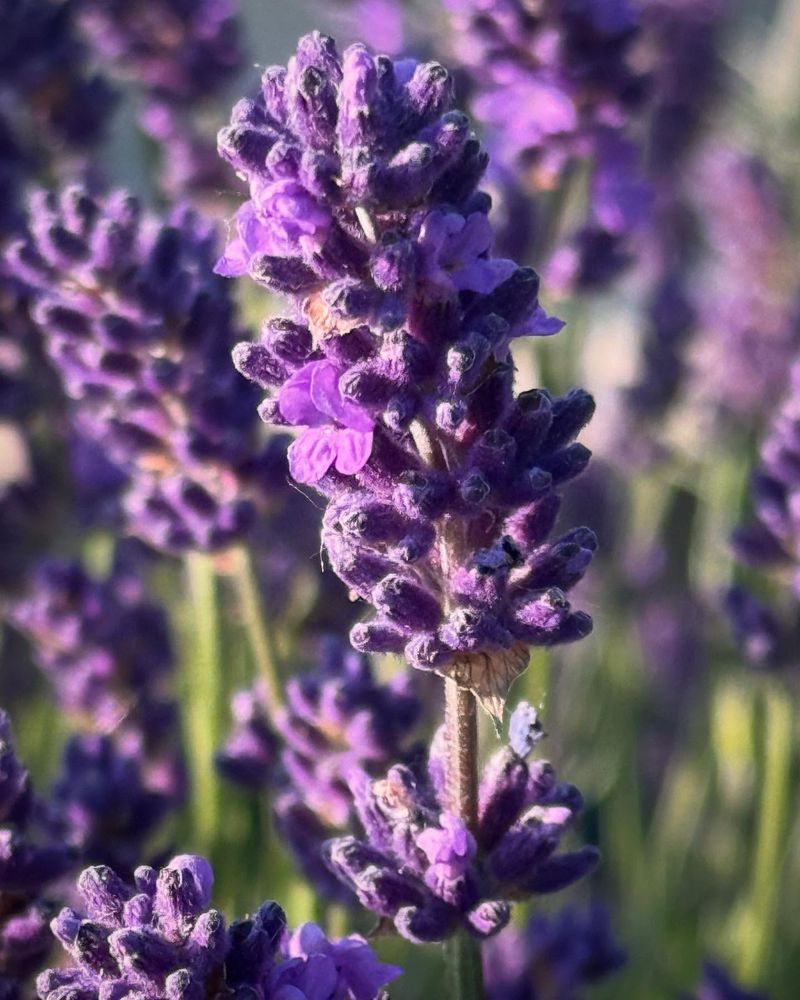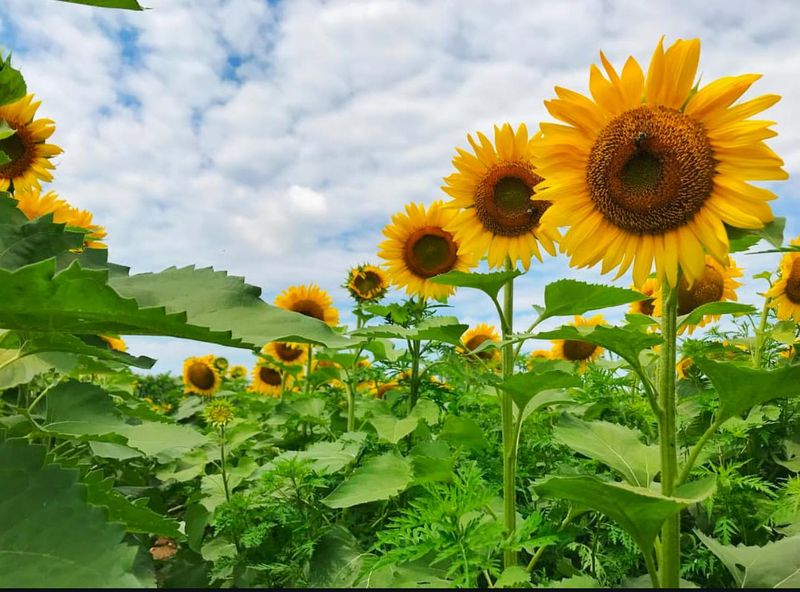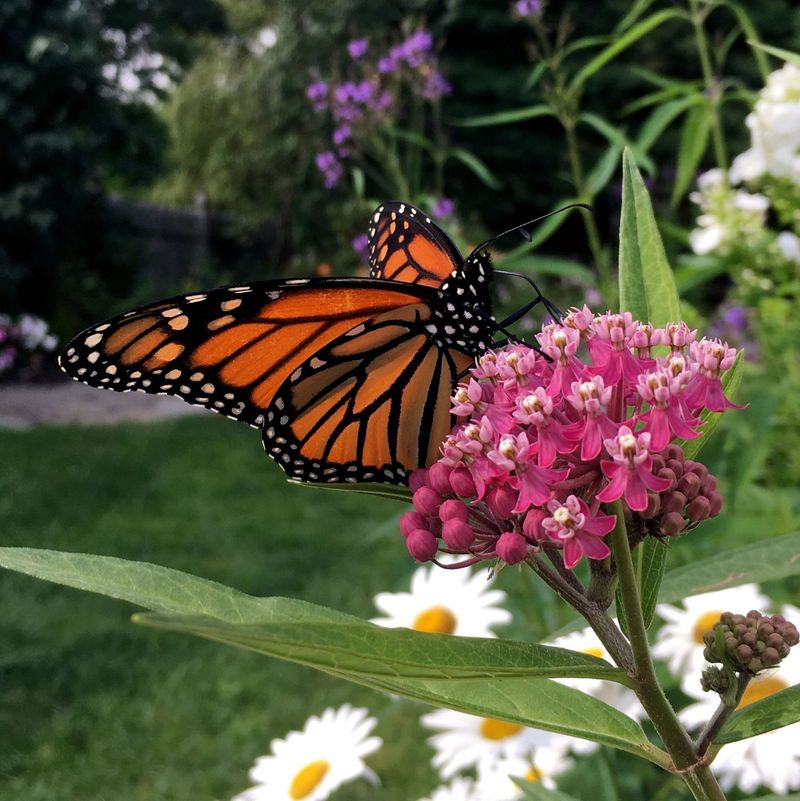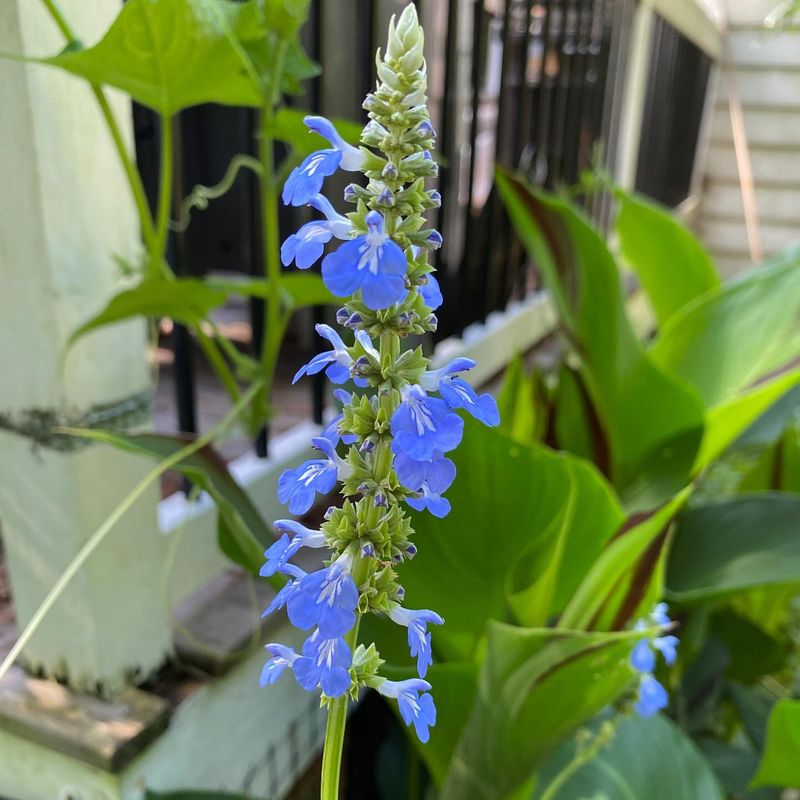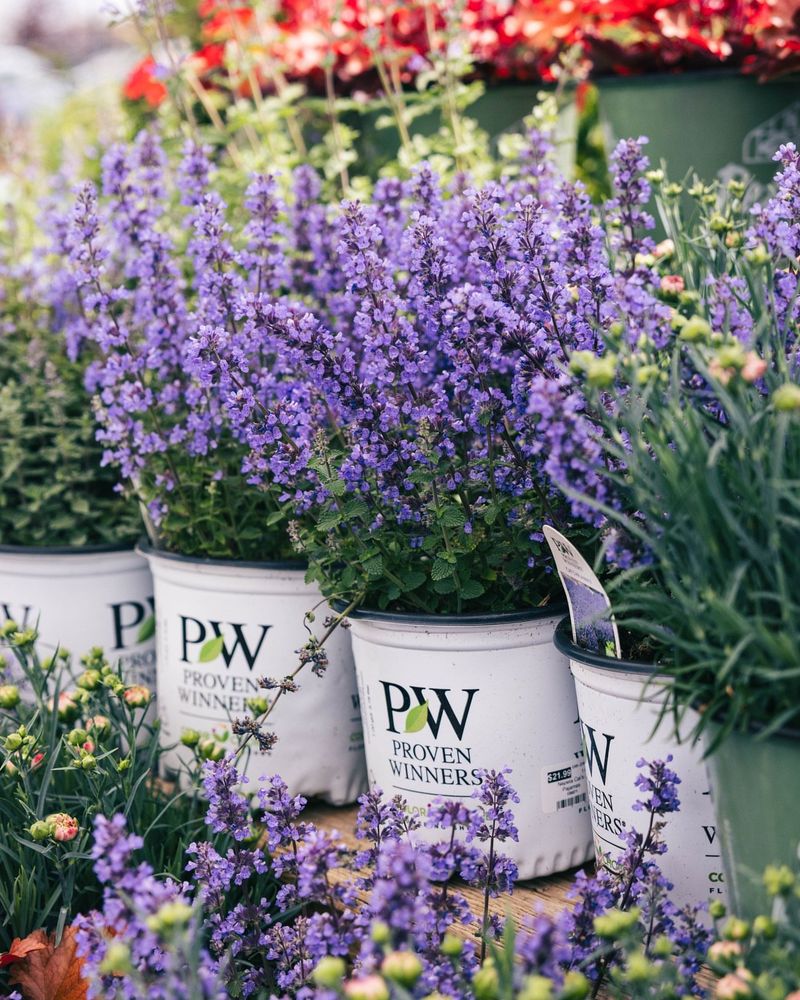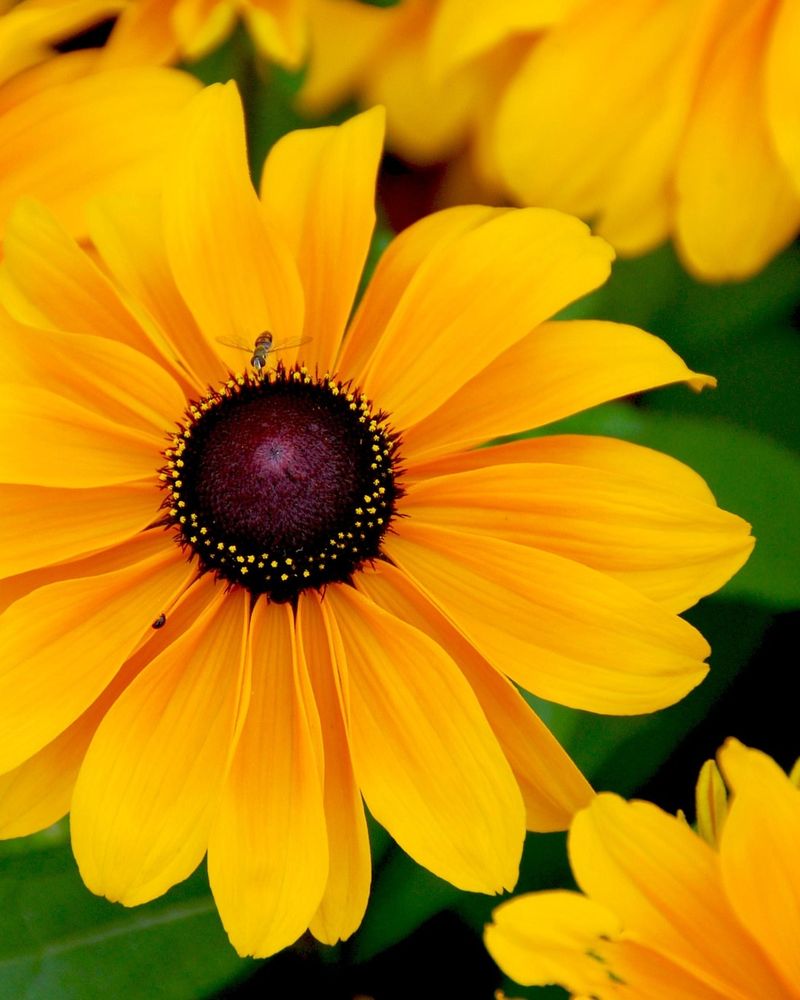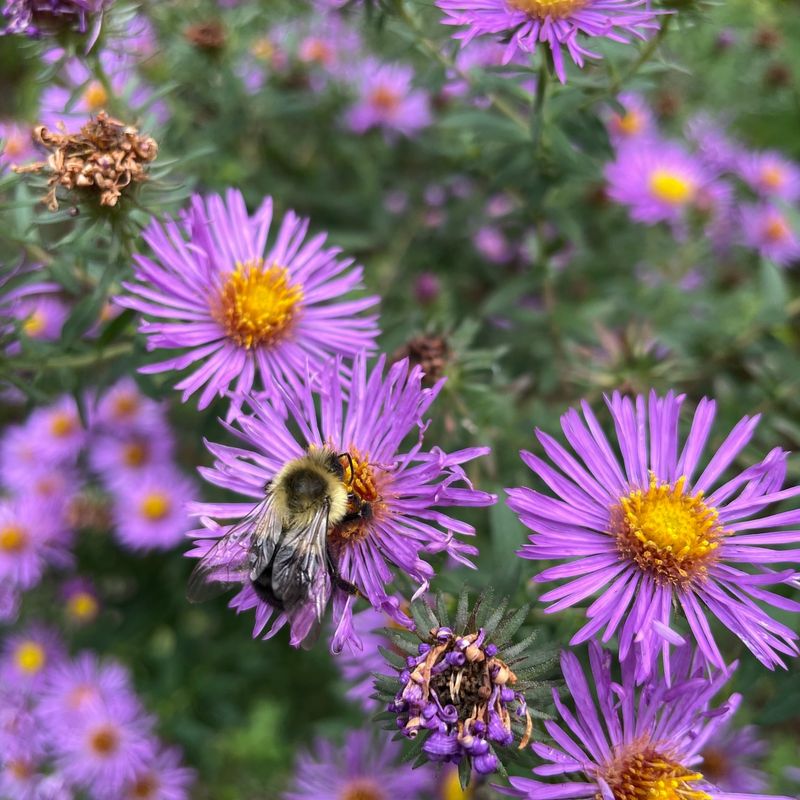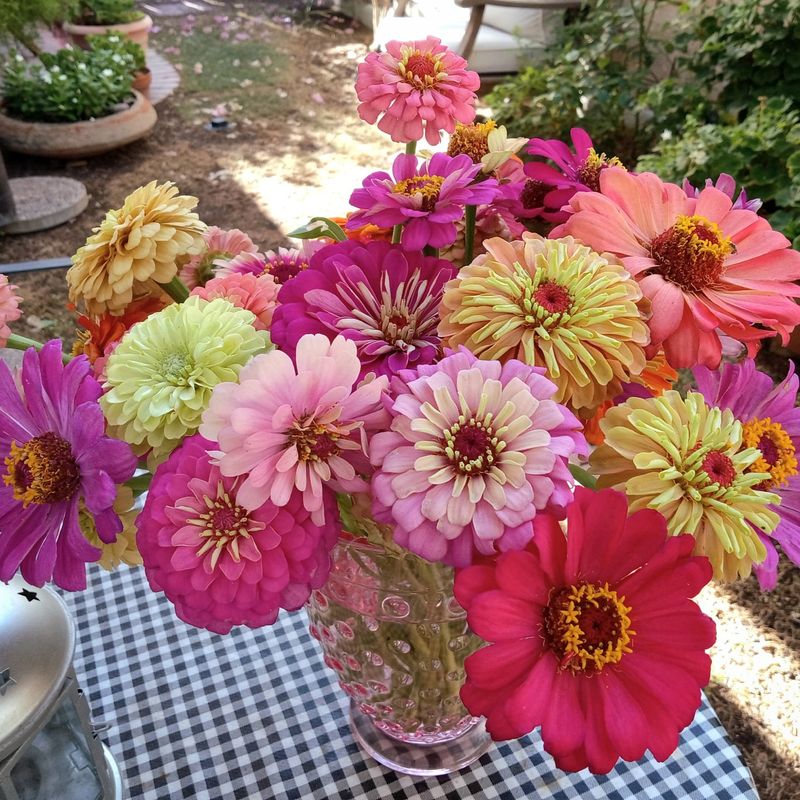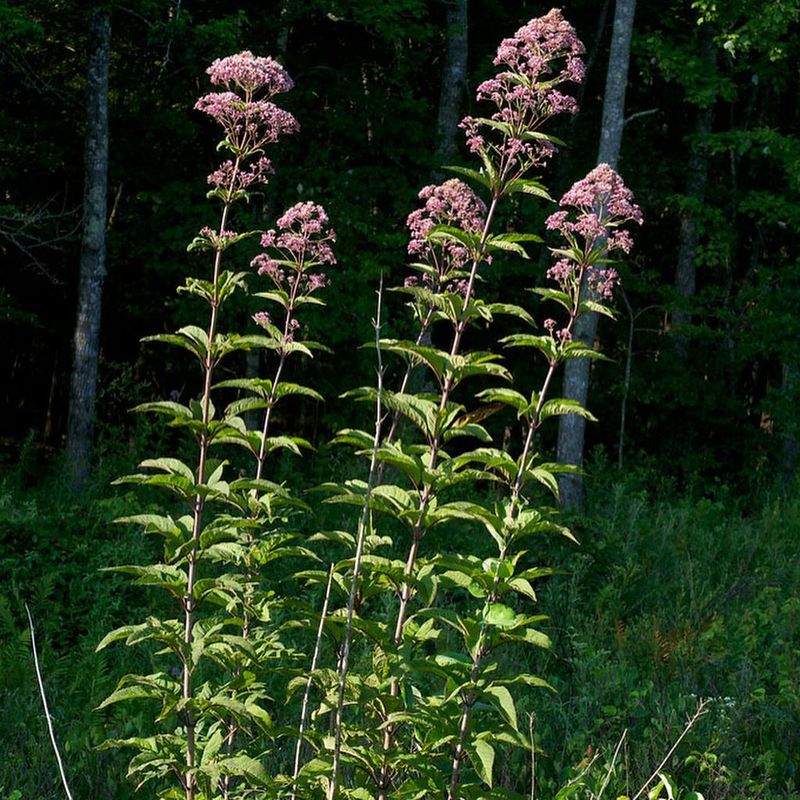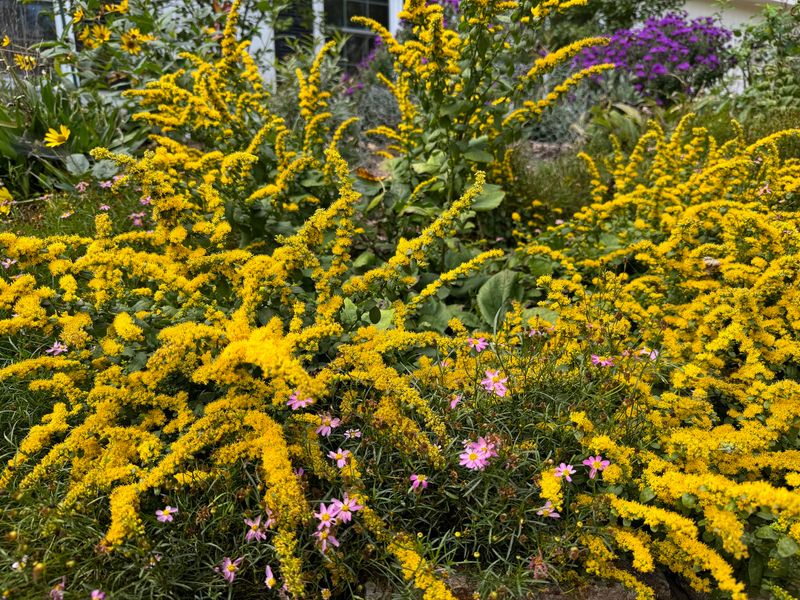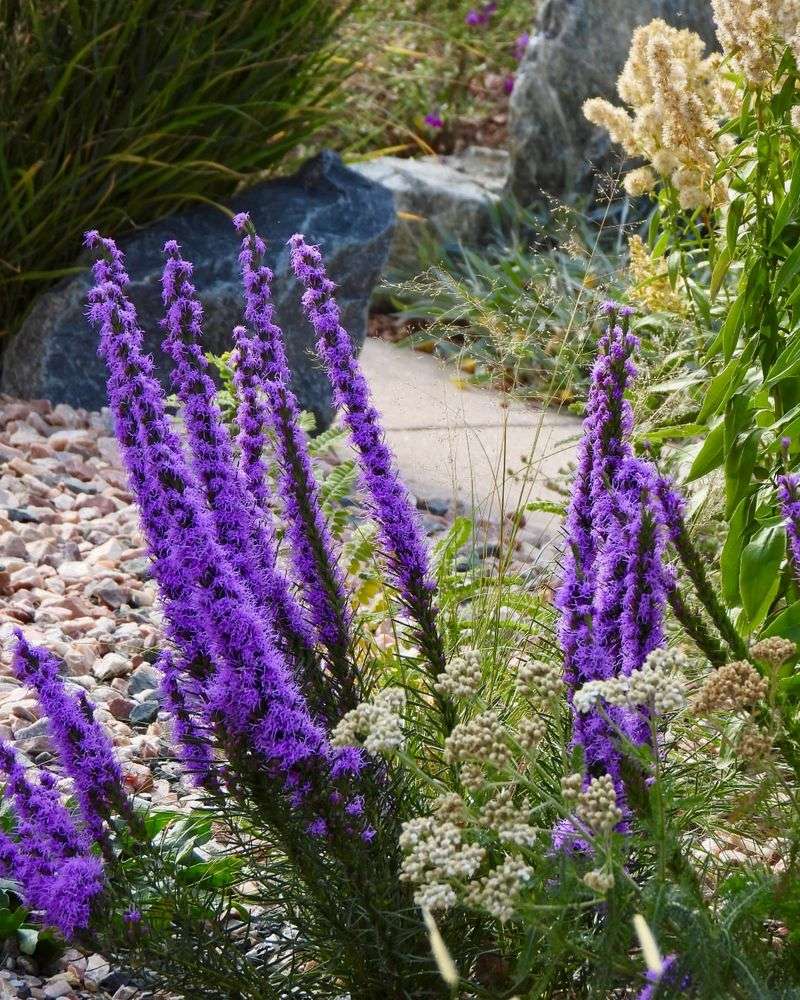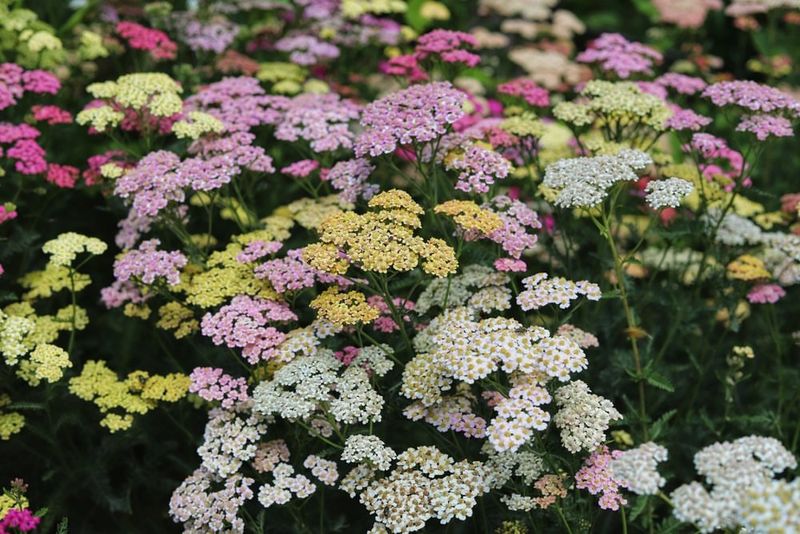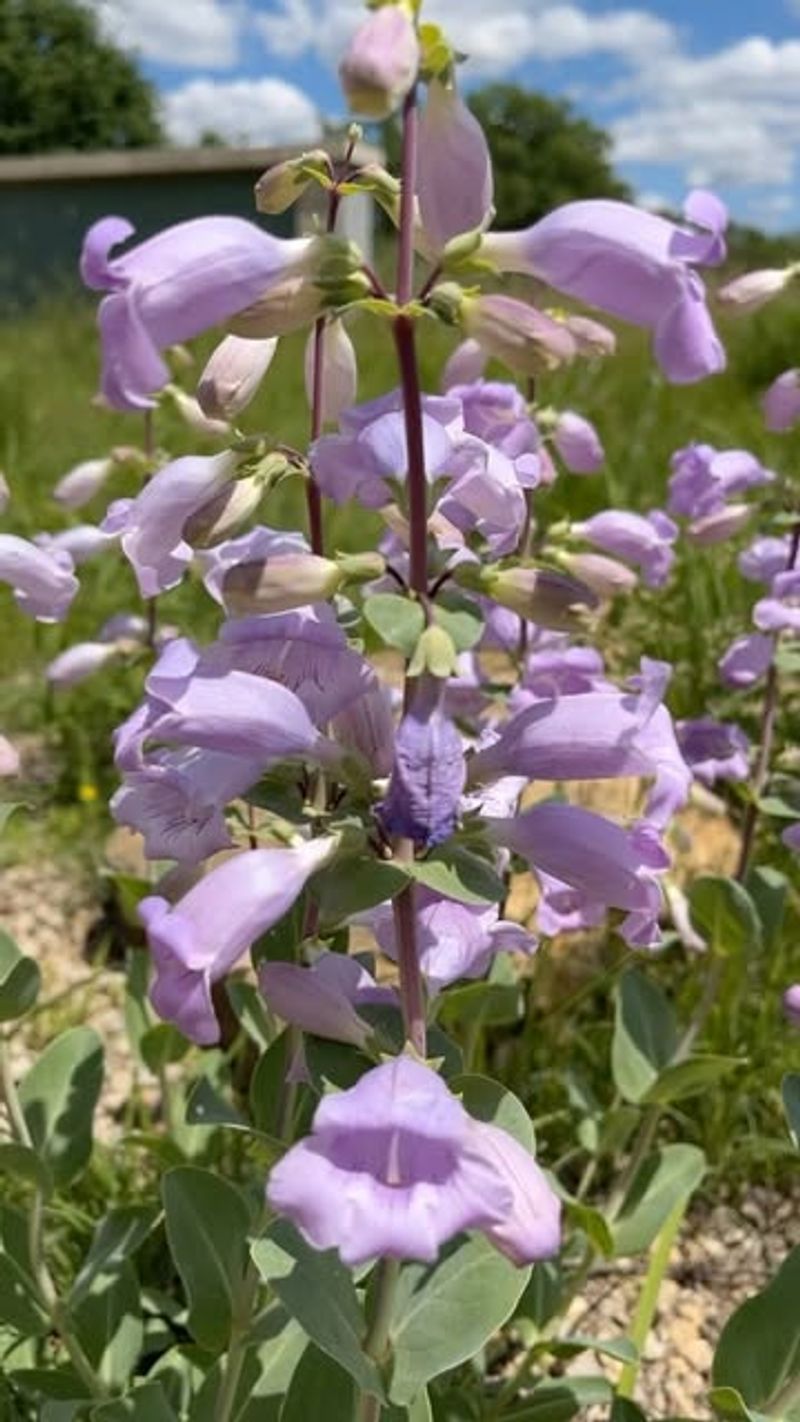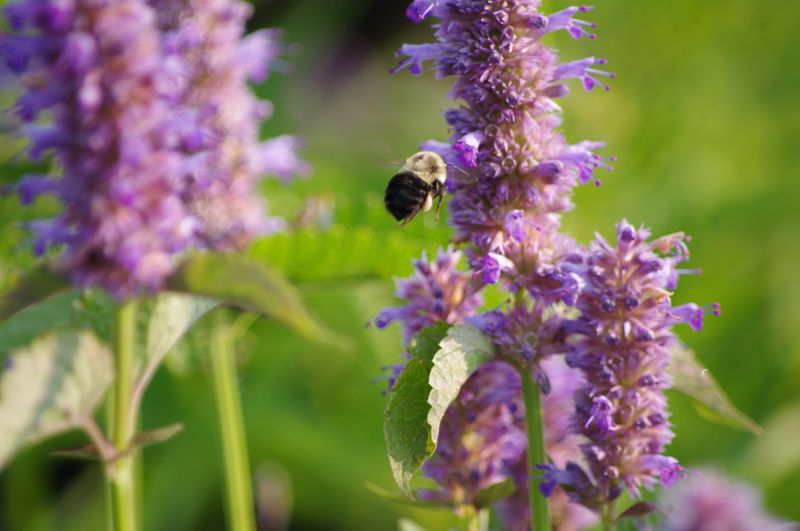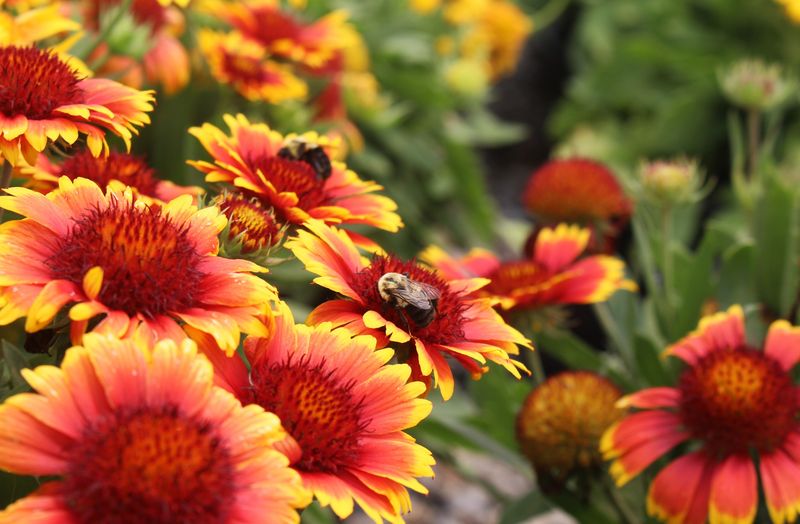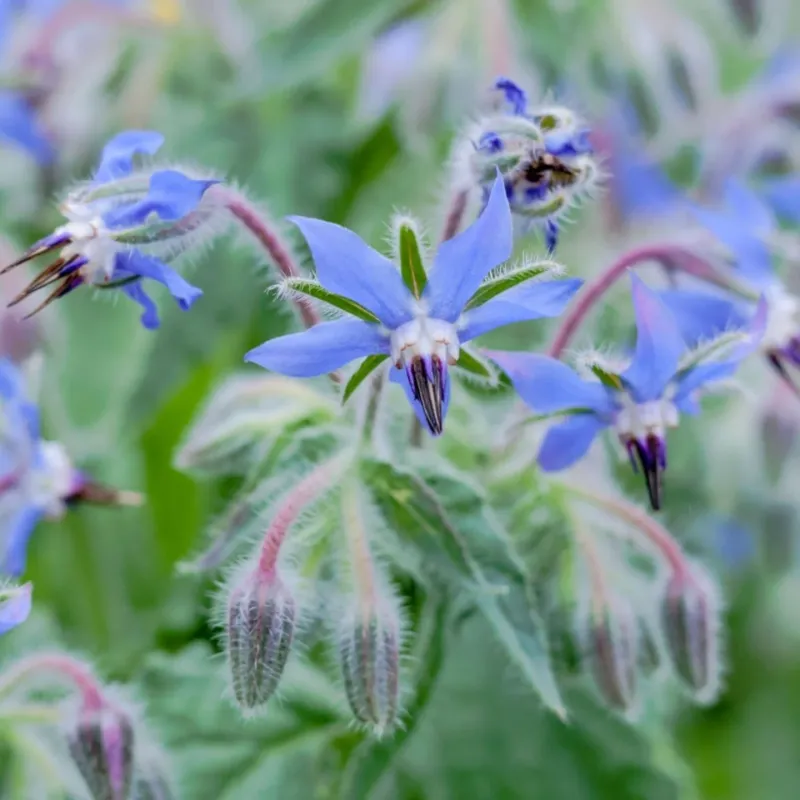Want more butterflies, bees, and hummingbirds in your yard? It starts with the right flowers. These 19 blooming beauties are pollinator magnets—bursting with color, rich in nectar, and easy to grow.
Plant a few, and your garden will be buzzing with life in no time.
1. Purple Coneflower (Echinacea)
Native to North America, purple coneflowers stand tall with their distinctive spiky centers and drooping purple petals. Bees and butterflies flock to these hardy perennials from summer through fall.
Once established, they’re incredibly drought-tolerant and can thrive in most soil conditions. Plant them in full sun for best results.
Beyond attracting pollinators, echinacea has medicinal properties and has been used for centuries to boost immunity. The seed heads also provide winter food for goldfinches and other birds.
2. Bee Balm (Monarda)
Crowned with tufted blooms in scarlet, purple, or pink, bee balm creates a fireworks display in summer gardens. Hummingbirds simply can’t resist its tubular flowers, while bees and butterflies gather for the nectar feast.
A member of the mint family, bee balm spreads enthusiastically through underground runners. Give it room to roam in moist, well-drained soil.
Crush a leaf between your fingers to release its refreshing citrusy-minty scent – Native Americans used it for tea and medicinal purposes.
3. Butterfly Bush (Buddleia)
Long, arching wands topped with cone-shaped flower clusters make butterfly bush a showstopper. Available in purple, pink, white, and blue, these fragrant blooms live up to their name by attracting clouds of butterflies.
Fast-growing and deer-resistant, butterfly bush thrives in sunny spots with well-drained soil. Regular deadheading extends the blooming season from summer into fall.
While beautiful, some varieties can be invasive in certain regions. Look for newer, sterile cultivars like ‘Miss Molly’ or ‘Blue Chip’ that won’t self-seed and spread beyond your garden.
4. Lavender (Lavandula)
Graceful purple spikes rising above silvery foliage make lavender a garden classic. Bees buzz excitedly around these fragrant blooms, while you’ll enjoy their calming scent wafting through your yard.
Mediterranean by nature, lavender demands excellent drainage and full sun. Plant in raised beds or containers if your soil tends to stay wet.
Harvest stems when flowers first open for the strongest fragrance in dried arrangements, sachets, or culinary uses. English lavender (Lavandula angustifolia) varieties are typically hardiest in cold climates.
5. Sunflower (Helianthus)
Sunflowers stand like cheerful giants in the garden, their golden faces tracking the sun’s daily journey. Beyond their iconic beauty, they’re pollinator powerhouses – bees gather pollen from the center while birds feast on seeds later.
Annual varieties grow quickly from seed, reaching impressive heights in just months. For perennial options that return yearly, try Helianthus multiflorus or Jerusalem artichoke.
Plant sunflowers in groups for dramatic impact or use shorter varieties as borders. Their deep roots help break up compacted soil while adding organic matter when they decompose.
6. Milkweed (Asclepias)
Monarch butterflies depend on milkweed – it’s the only plant their caterpillars can eat! The clusters of star-shaped flowers in pink, orange, or white provide nectar for adult butterflies and many other pollinators too.
Common milkweed (Asclepias syriaca) can spread aggressively, while butterfly weed (Asclepias tuberosa) forms well-behaved clumps with stunning orange blooms. Both thrive in full sun.
Leave the fascinating seed pods intact to enjoy their dramatic split and release of silky-tufted seeds in fall, or harvest them early if you don’t want volunteers throughout your garden.
7. Salvia (Sage)
Spikes of tubular flowers in vibrant blues, purples, and reds make salvias magnetic to hummingbirds. Their long, slender blooms perfectly match a hummingbird’s bill, creating a perfect pollination partnership.
From the culinary sage in your herb garden to ornamental varieties that reach several feet tall, this diverse family offers options for every garden spot. Most prefer full sun and tolerate drought once established.
Annual salvias like ‘Black and Blue’ deliver non-stop blooms until frost, while perennial types provide reliable returns year after year. Deadhead spent flowers to encourage continuous blooming throughout summer.
8. Catmint (Nepeta)
Soft clouds of lavender-blue flowers hover above aromatic gray-green foliage, creating a dreamy effect in the garden. Bees simply can’t resist catmint – you’ll often see dozens buzzing around a single plant!
Tough as nails, catmint thrives in poor soil and drought conditions. Its neat mounding habit makes it perfect for borders or spilling over walls.
Cut plants back by half after the first flush of bloom to encourage a second show. Unlike its cousin catnip, most ornamental catmints won’t drive your feline friends into a frenzy, though they may still show some interest.
9. Black-Eyed Susan (Rudbeckia)
Golden petals radiating around chocolate centers give black-eyed Susans their sunny charm. These native wildflowers bloom prolifically from midsummer into fall, providing crucial late-season nectar for bees and butterflies.
Remarkably unfussy, they tolerate clay soil, drought, and partial shade, though they bloom best in full sun. The variety ‘Goldsturm’ has earned countless fans for its reliability and compact growth.
Leave the seed heads standing through winter – they add architectural interest to the snowy garden while feeding hungry birds. Most varieties self-seed readily, creating natural drifts over time.
10. Asters (Symphyotrichum)
Fall gardens burst with new life when asters unfurl their starry blooms in purple, pink, blue, or white. As summer flowers fade, these natives step up to provide critical late-season nectar for butterflies preparing for migration.
New England aster can reach 5 feet tall, creating dramatic backdrop plantings, while lower-growing varieties like ‘Woods Blue’ stay under 18 inches. Most prefer full sun but tolerate partial shade.
Pair with ornamental grasses and goldenrod for a stunning autumn display. Divide plants every few years in spring to maintain vigor and prevent them from dying out in the center.
11. Zinnia (Zinnia elegans)
Bursting with candy colors from salmon pink to lime green, zinnias bring non-stop cheer from summer until frost. Butterflies flock to these easy annuals, often visiting in such numbers you’ll spot several species at once.
Direct sow seeds after danger of frost has passed, or start indoors for earlier blooms. The more you cut for bouquets, the more flowers they produce!
Tall varieties like ‘Benary’s Giant’ reach 4 feet and make spectacular cutting flowers, while ‘Profusion’ series stays compact for containers. Their drought tolerance makes them perfect for hot, sunny spots where other flowers might struggle.
12. Joe-Pye Weed (Eutrochium)
Majestic is the word for Joe-Pye weed, with its 7-foot stems topped by fluffy domes of mauve flowers. Butterflies gather by the dozens on these massive blooms, creating a spectacular late-summer show.
Despite its name, this native plant isn’t a weed at all, but a valuable addition to naturalistic gardens. Newer varieties like ‘Little Joe’ offer the same butterfly appeal in a more compact 4-foot package.
Plant in moist areas where many other perennials might struggle – Joe-Pye thrives in rich, damp soil. The sturdy stems rarely need staking, even in windy sites.
13. Goldenrod (Solidago)
Fountains of tiny golden flowers transform fall gardens into pollinator parties. Contrary to popular belief, goldenrod doesn’t cause hay fever – that’s ragweed blooming at the same time!
Native goldenrods support over 100 butterfly and moth species. Garden-friendly varieties like ‘Fireworks’ or ‘Golden Fleece’ stay well-behaved without the aggressive spreading of wild types.
Pair with purple asters for a classic fall combination that mimics nature’s own design. The dried seed heads provide winter interest and food for birds, while the sturdy stems offer overwintering sites for beneficial insects.
14. Blazing Star (Liatris)
Feathery purple spikes that bloom from top to bottom (opposite most flowers) make blazing star truly unique. Butterflies, especially monarchs, can’t resist these native prairie plants during their late summer display.
Growing from corms similar to bulbs, liatris develops deep roots that make it incredibly drought-tolerant once established. Plant in groups of at least 5-7 for the most dramatic effect.
The bottlebrush blooms also make excellent cut flowers, lasting over a week in arrangements. For smaller gardens, try the compact ‘Kobold’ variety that stays under 2 feet tall.
15. Yarrow (Achillea)
Flat-topped flower clusters in gold, pink, red, or white attract tiny beneficial wasps and flies that help control garden pests. The fern-like foliage adds texture even when yarrow isn’t blooming.
Few plants match yarrow’s toughness – it thrives in poor, dry soil where many perennials would fail. Modern varieties like ‘Moonshine’ offer stronger stems and longer-lasting colors than the wild type.
Ancient healers valued yarrow for its medicinal properties, using it to stop bleeding and fight infection. Harvest flowers when they’re fresh for dried arrangements that hold their color for months.
16. Penstemon (Beardtongue)
Bell-shaped flowers dangling from tall stems give penstemon an elegant presence in the garden. Hummingbirds dart between the tubular blooms, perfectly shaped for their long bills.
With over 250 species native to North America, there’s a penstemon for almost every garden condition. Rocky Mountain penstemon offers true blue flowers, while firecracker penstemon blazes with scarlet tubes.
Most varieties prefer excellent drainage and moderate watering. Their semi-evergreen foliage provides winter interest in milder climates, while their tolerance of poor soil makes them perfect for challenging spots.
17. Anise Hyssop (Agastache)
Spikes of tiny lavender flowers emit a delightful licorice scent when brushed against. Bees become so intoxicated by anise hyssop that you’ll often see them gathering nectar until dusk.
Drought-tolerant and deer-resistant, this North American native asks for little beyond full sun and well-drained soil. The sturdy stems rarely need staking, even in windy gardens.
Harvest the aromatic leaves for tea or to flavor summer drinks. ‘Blue Fortune’ offers reliable perennial performance, while ‘Golden Jubilee’ adds chartreuse foliage that brightens shady corners.
18. Blanket Flower (Gaillardia)
Painted with fiery sunset colors of red, orange, and yellow, blanket flowers bring the heat to summer gardens. Their daisy-like blooms with distinctive banded patterns keep butterflies and bees buzzing for months.
Heat and drought only make these tough perennials bloom more prolifically. For non-stop flowers, remove spent blooms regularly or choose self-cleaning varieties like the Mesa series.
Native to the American prairies, blanket flowers earned their name from their resemblance to Native American blanket patterns. Their taproot helps them survive in poor, sandy soils where many flowers would struggle.
19. Borage (Borago officinalis)
Star-shaped blue flowers dangling from fuzzy stems give borage its whimsical charm. Honeybees make a beeline for these nectar-rich blooms – a single plant can attract dozens of pollinators at once!
This easy annual self-seeds readily, returning year after year without becoming invasive. The cucumber-flavored leaves and edible flowers make delightful additions to summer drinks and salads.
Plant borage near strawberries and tomatoes – it’s a companion plant that may improve their growth and flavor. Its taproot breaks up compacted soil while drawing up nutrients from deep below the surface.

